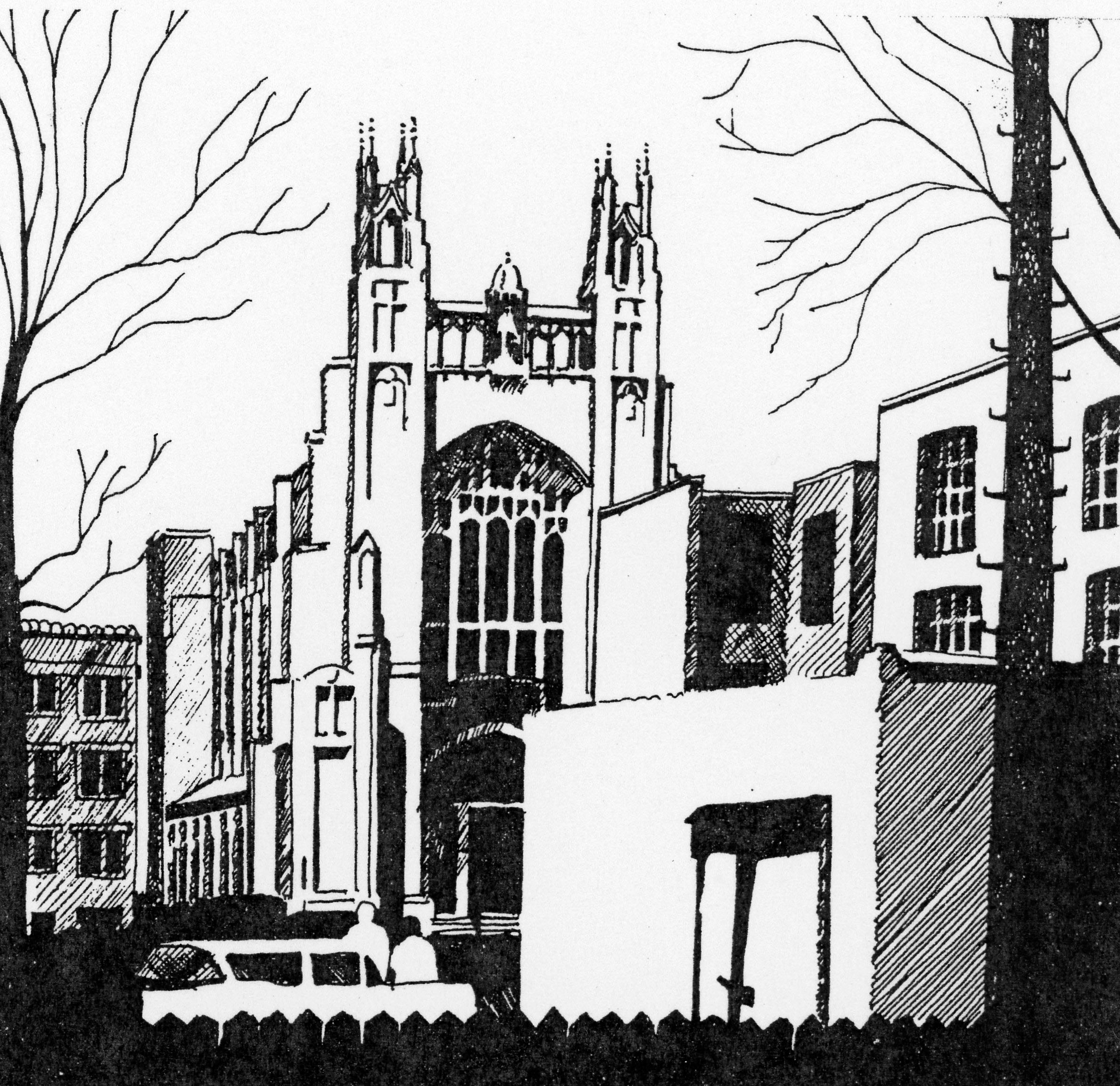|
The Chicago Memoirs:
Our Redeemer Lutheran Church, 1967-1972
Introduction
“The Dan Ryan Expressway had been built below ground level just three blocks east of the church so that urban blight wasn’t visible to commuters, but the tall twin towers of the Our Redeemer facade were visible from the Chicago Skyway on its westward link-up with the Dan Ryan. They still can be seen, sentinels over the mixed history of the community below.”
— Joel Nickel, The Chicago Memoirs
Memory is a tricky thing. It has now been 44 years since the Nickel family moved from Detroit to Our Redeemer Lutheran Church on the “great Southside of Chicago,” and it is not unwise to question the reliability of what I write. My memory is bolstered by notes that I kept, by the “little red books” from Concordia Publishing House, a yearly gift to pastors, in which I noted details of daily appointments. In 1973 while serving as co-pastor of University Lutheran Church in Champaign, I wrote the rough draft of these memoirs, having come to the belated conclusion that our “Chicago story” was unique in many ways and should be recorded, if only to jog my remembrance and gratitude. We survived, and this was by grace alone.

The Cathedral of Gospel Art
Once considered one of the three major Lutheran Church–Missouri Synod parishes in Chicago, Our Redeemer was in steep decline by the mid-20th century.
Others can judge for themselves if this story is useful and interesting. While time often works to filter out complex details, there is enough of a simple story line to indicate how transforming the struggle for ministry in the Englewood community really was. Sue and I left the comfortable security of our white middle class backgrounds, our theological training that was self-satisfied with traditional answers, and our social naivete that came up against urban realities. To this day the Nickel family carries with it the impact of these five years, for they shaped our sense of ethics, our compassion for the poor without paternalism, and our appreciation of the communal, inclusive nature of the Church.
This is not a success story. Much of what happened was marked by failure: a once proud congregation of the Lutheran Church-Missouri Synod reduced from thousands of members down to a Sunday attendance of fifty brave and determined souls; a young pastor hoping to be a “change agent” was unable to turn the tide of rapid decline; a neo-Gothic worship space with seating for 1,700, once highlighted in the magazine section of the Chicago Tribune, now overwhelmed the faithful few with its vastness — its 77 feet from floor to ceiling “holy space” that cost a lot of money to heat in winter. There is no room for triumphalism in the Our Redeemer story.
Englewood was overwhelmed by the consequences of northern urban racism and a societal implosion of poverty and neglect which is unmitigated to this day (see the postscript). While there is here an invitation to inevitable fatalism, the human spirit rallies against such nihilism with hope. Once a proud “silk hat” neighborhood, the area around Our Redeemer at 6430 South Harvard Avenue was filled with active people when we arrived. St. Bernard Hospital was just a half block away; the Englewood “L” could be heard at all hours of day and night as it snaked around a tight elevated curve with steel on steel screeches, stopping at a station just a block and a half away from our parsonage. The Dan Ryan Expressway had been built below ground level just three blocks east of the church so that urban blight wasn’t visible to commuters, but the tall twin towers of the Our Redeemer facade were visible from the Chicago Skyway on its westward link-up with the Dan Ryan.
They still can be seen, sentinels over the mixed history of the community below. It was the abiding hope for the survival of the congregation that the Dan Ryan would make the Sunday commute from suburb to city easy enough so that the far-flung membership would return to the Cathedral of Gospel Art. The riots of 1968 put an end to that dream.
Next: The Chicago Memoirs of 1967
| 
